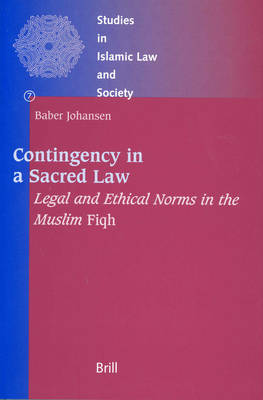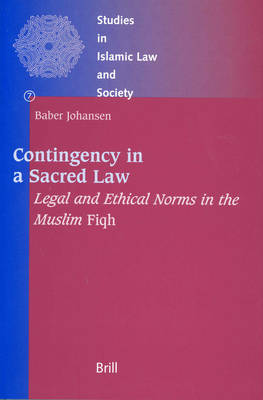
- Afhalen na 1 uur in een winkel met voorraad
- Gratis thuislevering in België vanaf € 30
- Ruim aanbod met 7 miljoen producten
- Afhalen na 1 uur in een winkel met voorraad
- Gratis thuislevering in België vanaf € 30
- Ruim aanbod met 7 miljoen producten
Zoeken
€ 480,95
+ 961 punten
Omschrijving
This book focuses on the Hanafite school of fiqh which originated in the eight century and is, geographically, the most widespread and, numerically, the most important representative of Muslim normativeness. The fiqh consists of liturgical, ethical and legal norms derived from the Islamic revelation. The introduction outlines the main boundaries between fiqh and theology and follows the modern debate on the comparison between the fiqh and the secularized law of the modern Occident. The core of the book is dedicated to the way in which the fiqh, in the period between the 10th and the 12th centuries, adapted to changing circumstances of urban and agricultural life (chapters I and II), to the way in which it marked off legal from ethical norms (chapter III), religious from legal status (chapters IV to VI) and legal propositions from religious judgment (chapter VII). The forms in which change of norms was made acceptable is discussed in chapter VIII. The last chapter deals with an attempt of Shi'i scholars in the Islamic Republic of Iran to answer new problems in old forms.
Specificaties
Betrokkenen
- Auteur(s):
- Uitgeverij:
Inhoud
- Aantal bladzijden:
- 536
- Taal:
- Engels
- Reeks:
- Reeksnummer:
- nr. 7
Eigenschappen
- Productcode (EAN):
- 9789004106031
- Verschijningsdatum:
- 22/12/1998
- Uitvoering:
- Hardcover
- Formaat:
- Genaaid
- Afmetingen:
- 167 mm x 243 mm
- Gewicht:
- 1065 g

Alleen bij Standaard Boekhandel
+ 961 punten op je klantenkaart van Standaard Boekhandel
Beoordelingen
We publiceren alleen reviews die voldoen aan de voorwaarden voor reviews. Bekijk onze voorwaarden voor reviews.











